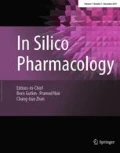The legal landscape for animal experimentation is rapidly changing. Progress in global regulatory frameworks to improve the protection of animals already has significant implications well beyond academic research. Particularly, the European Union Directives Directive 2010/63/EU 2010 on the protection of animals used for scientific purposes, and Cosmetics Directive 76/768/EEC 1976, a complete ban on the use of animals for cosmetic testing in 2013, impose strong constraints on academia and industry. Hence there is a strong need to improve the welfare of animals, fortify the three R’s principles (Replace, Reduce and Refine use of animals) in EU legislation, and provide alternative approaches for animal research and the testing of new cosmetics. The new regulations are by no means an exclusive European affaire, as they have been reinforced globally by bi- and multi-lateral cooperations.
Therefore, these new regulations will ultimately reshape our way of thinking about basic and preclinical experimental design, by not only limiting the sample size of experiments, but also adding critical restrictions on procedures that require alternative, quantitatively-defined frameworks for experimental setups and analyses. While the three R’s challenge traditional concepts in animal studies, which equate an increase in sample size with an improvement in the robustness of experimental results, they provide a great chance for in silico approaches (Noori and Spanagel 2013) to shine.
Ligand- and structure-based virtual screening procedures for drug discovery (Rester 2008), computational pharmacokinetics (Bois 2013), in silico screening procedures to investigate systemic drug effects (Noori and Jäger 2010; Noori et al. 2012a), mathematically-based optimal experimental design (Fedorov et al. 2002) and novel biostatistical approaches (Beery and Zucker 2011; Noori et al. 2012b) not only bear the potential to improve animal experiments, but can also reduce the number of animals used by eliminating unnecessary testing (e.g., via meta-analysis studies).
In Silico Pharmacology provides an optimal electronic platform for studies in these fields, and through emphasis on the three R’s intends to assist animal researchers in overcoming present and future challenges, contributing to a modernization of their research concepts. In particular, by being indexed in the largest database of biomedical articles established by the US National Library of Medicine (PubmedCentral: http://www.ncbi.nlm.nih.gov/pmc/journals/2586/), it has begun to bring its computer-based publications closer to end-user experimentalist readership and facilitate communication in the interface area of dry- and wet-laboratories.
References
(2010) Directive 2010/63/Eu of the European parliament and of the council of 22 September 2010 on the protection of animals used for scientific purposes. http://eur-lex.europa.eu/LexUriServ/LexUriServ.do?uri=OJ:L:2010:276:0033:0079:en:PDF
(1976) Cosmetics directive 76/768/EEC. http://eur-lex.europa.eu/LexUriServ/LexUriServ.do?uri=CONSLEG:1976L0768:20100301:en:PDF
Beery AK, Zucker I (2011) Sex bias in neuroscience and biomedical research. Neurosci Biobehav Rev 35(3):565–572
Bois FY (2013) Computational pharmacokinetics at a crossroads. In Silico Pharmacol 1:5
Fedorov V, Gagnon R, Leonov S (2002) Design of experiments with unknown parameters in variance. Appl Stoch Model Bus Ind 18:207–218
Noori HR, Spanagel R (2013) In silico pharmacology: drug design and discovery’s gate to the future. In Silico Pharmacol 1:1
Noori HR, Spanagel R, Hansson AC (2012a) Neurocircuitry for modeling drug effects. Addict Biol 17(5):827–864
Noori HR, Fliegel S, Brand I, Spanagel R (2012b) The impact of acetylcholinesterase inhibitors on the extracellular acetylcholine concentrations in the adult rat brain: a meta-analysis. Synapse 66(10):893–901
Noori HR, Jäger W (2010) Neurochemical oscillations in the basal ganglia. Bull Math Biol 72(1):133–147
Rester U (2008) From virtuality to reality - virtual screening in lead discovery and lead optimization: a medicinal chemistry perspective. Curr Opin Drug Discov Devel 11(4):559–568
Author information
Authors and Affiliations
Corresponding author
Rights and permissions
Open Access This article is distributed under the terms of the Creative Commons Attribution 4.0 International License (https://creativecommons.org/licenses/by/4.0), which permits use, duplication, adaptation, distribution, and reproduction in any medium or format, as long as you give appropriate credit to the original author(s) and the source, provide a link to the Creative Commons license, and indicate if changes were made.
About this article
Cite this article
Noori, H.R., Spanagel, R. New regulations for animal research – a chance to shine for in silico approaches. In Silico Pharmacol. 3, 1 (2015). https://doi.org/10.1186/s40203-015-0006-1
Received:
Accepted:
Published:
DOI: https://doi.org/10.1186/s40203-015-0006-1

